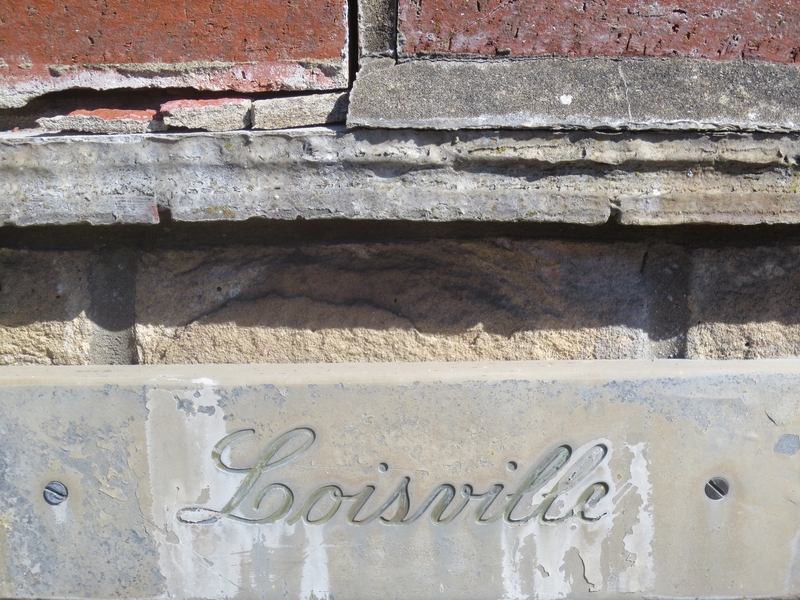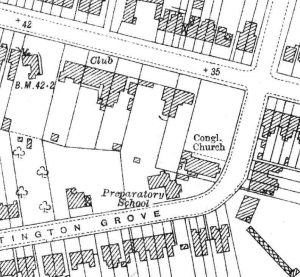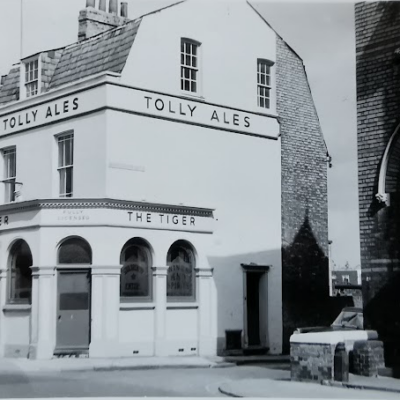Search by topic
- archaeology
- Building of Local Interest
- charity
- church
- crime
- dressmaker
- fire
- Great Eastern Railway
- Listed building
- Mapping Relief
- medieval
- oral history
- poverty
- Public House
- Rattee & Kett
- Religious House
- Roman
- scholar
- school
- Then and Now
- tudor
- women
- work
- world war one
- world war two
Search by text
 71 Hartington Grove
71 Hartington Grove71 Hartington Grove, Loisvale, The Research Hospital
History of the Research Hospital hartington Grove
1901
(Loisvale)
Aron Berry, widower, 60, builder, born Cambridge
Bertha, daughter, 22, commercial clerk, born Cambridge
Daisy, daughter, 18, born Cambridge
1911
(Loisvale)
Arthur Ernest William Payne, 39, accountant, born London
[Arthur was accountant for Bailey and Tebbutt, the brewers. He was born at Gun Street, Spitalfields; his father James Thomas, b Spitalfields, was clerk to a wine merchant; his father, James was a greengrocer in Sopitalfields.]
Louisa Ann Payne, 35, born Essex
Arthur Richard , 5, born Essex
Frank Harold, 2, born Essex
Louisa Gladys, 11 months, born London
Mary Ann Nickolls, month in law, visitor, 72, widow, born London
Elsie Meadmore, servant 25, born London
1918
Arthur was 47 and under new rules could be called up. He went before the Cambridge Tribunal in September claiming exemption and was granted 3 months. he gave his address as 53 Hartington Grove, Norfolk House.
1922
Payne family were still in Cambridge in this year.
Arthur Ernest and family moved to Yeovil where Arthur became the accountant manager for Brutton, Mitchell, Toms Ltd, brewers, wine and spirit merchants.
Loisvale, in 1982 no.71 (previously 77) has an interesting history. Alfred Jones and his wife Eliza inherited the land from C B Miller who died in 1876. The land was formerly known by the name of Younton Field. Their house was sold at auction in 1904 at the Lion Hotel and bought by Edwin Gamlen for £600.
The Research Hospital was set up by Dr T S P Strangeways in 1905 to study rheumatoid arthritis and related diseases. He found a matron who gave her services free and various doctor friends agreed to work on a similar basis. They were called the Committee for the Study of Special Diseases.
In 1905 it had two wards, each with three beds and the coal shed was converted into a laboratory. Patients were not charged but most gave a donation on being discharged. One patient was Mary Rossetti, sister of the Victorian poet, Christina Rossetti.
In 1905 the annual cost of the project was £500 including £256 for upkeep of the hospital but by 1908 funds were exhausted and the hospital closed. It reopened in 1909 but around this time it was decided that bigger premises were needed for the project to be viable. In 1912 the new Research Hospital was opened in Wort’s Causeway.
Later residents at Loisvale found traces of the hospital in the form of tiny drawing pin marks on the door. Drawing pins had secured cards with the patients’ names to the rooms which were used as wards.
Sources: Cambridge News (Cambridgeshire Collection), History of the Strangeways Research Laboratory, E.D.Strangeways 1962
Contribute
Do you have any information about the people or places in this article? If so, then please let us know using the Contact page or by emailing capturingcambridge@
License
This work is licensed under CC BY-NC-SA 4.0







